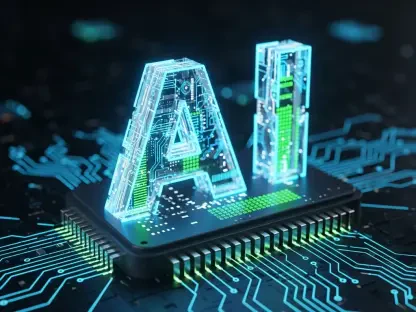The Landscape of AI Code Generation: Current State and Importance
In an era where software development drives innovation across industries, AI code generation has emerged as a transformative force, with the market experiencing exponential growth and becoming indispensable to modern programming workflows. This technology, which automates the creation of code snippets, debugging, and even entire applications, is reshaping how developers tackle complex projects, slashing time-to-market for businesses worldwide. The significance of AI-driven tools lies in their ability to enhance productivity, reduce human error, and democratize coding skills across diverse skill levels, making them a cornerstone of enterprise and academic environments.
Major tech giants and research entities, including Salesforce Research, dominate this space, alongside a plethora of startups and open-source contributors pushing the boundaries of what’s possible. Autoregressive (AR) models, which predict code tokens sequentially, have long held sway as the standard, powering many widely used tools due to their precision in specific tasks. However, their limitations in understanding broader context have sparked a search for alternative approaches, setting the stage for new paradigms to challenge their dominance.
The scope of these tools spans from accelerating enterprise software deployment to fostering innovation in academic research, where students and professionals alike leverage AI to experiment with novel algorithms. Underpinning this industry are transformer-based architectures, which have revolutionized natural language processing and code synthesis by enabling models to grasp intricate patterns in programming languages. As adoption surges, the focus intensifies on scalability and efficiency, highlighting the need for groundbreaking solutions to meet evolving demands.
Understanding CoDA Breakthrough in Diffusion-Based Code Generation
Core Innovations and Technical Advancements
CoDA, or Coding via Diffusion Adaptation, marks a significant departure from conventional AI code generation methods by introducing a diffusion language model (DLM) approach that redefines how code is synthesized. Unlike AR models that generate code linearly, CoDA employs an iterative denoising process, refining noisy sequences into polished, contextually accurate code through multiple passes. This method allows for a deeper grasp of code structure, addressing gaps that sequential prediction often overlooks in intricate programming scenarios.
A key strength of CoDA lies in its bidirectional reasoning and edit consistency, enabling it to handle complex dependencies across entire codebases where traditional AR models falter. This capability aligns with emerging trends in AI research, where diffusion models are gaining traction for their holistic understanding and ability to synthesize code with nuanced context awareness. Such advancements signal a shift toward more adaptive and intelligent coding assistants that can anticipate developer intent more effectively.
Built on a lightweight transformer backbone, specifically Qwen3-1.7B, CoDA is engineered for scalability, making it an ideal fit for enterprise-grade applications where resource efficiency is paramount. Its design prioritizes practical deployment without sacrificing performance, offering a glimpse into how diffusion-based approaches can balance power and accessibility. This innovation positions CoDA as a potential game-changer in environments demanding robust yet manageable AI tools.
Performance Metrics and Market Impact
On performance benchmarks, CoDA demonstrates impressive results, notably achieving a 25% improvement on HumanEval after instruction tuning, a testament to its refined training methodology. Additionally, it boasts a 39.6% reduction in inference latency compared to larger models with 7B parameters, showcasing its edge in speed-critical applications. These metrics highlight how a smaller, optimized model can rival or even surpass bulkier counterparts in real-world settings.
When pitted against competitors on tests like HumanEval and MBPP, CoDA holds a competitive stance, often closing the gap with both AR and larger diffusion models, proving that efficiency need not compromise quality. Such outcomes suggest that diffusion-based models could redefine industry benchmarks, pushing vendors to prioritize lean architectures over sheer computational scale. This shift may encourage broader adoption across sectors constrained by hardware limitations.
Looking ahead, CoDA’s blend of efficiency and scalability is poised to influence market dynamics significantly, potentially lowering barriers for smaller enterprises to integrate advanced AI coding tools. Projections indicate that diffusion models could see accelerated growth in adoption over the next few years, especially as performance indicators continue to validate their superiority in specific use cases. This trajectory hints at a future where such technology becomes a standard in development pipelines.
Challenges in Adopting Diffusion Models Like CoDA
Transitioning from familiar AR frameworks to diffusion-based models like CoDA presents notable technical hurdles, primarily in adapting existing workflows and infrastructure to accommodate a fundamentally different approach. Many development environments are deeply entrenched in AR-compatible systems, requiring substantial retooling to integrate iterative denoising processes. This shift demands not only updated software stacks but also retraining of teams accustomed to traditional paradigms.
Scalability remains another concern, as diffusion models often require specialized training data to maintain precision across diverse coding contexts, from web development to embedded systems. Without curated, high-quality datasets, the risk of inconsistent outputs increases, potentially undermining trust in these tools for mission-critical applications. Addressing this necessitates investment in robust data pipelines tailored to varied programming languages and frameworks.
Market-driven challenges further complicate adoption, with user acceptance hinging on overcoming the learning curve associated with novel AI methodologies. Developers may initially resist change due to unfamiliarity, while enterprises could hesitate over perceived risks in unproven technology. To mitigate these issues, comprehensive documentation, active community support, and iterative refinements to model usability are essential steps to bridge the gap between innovation and practical implementation.
Regulatory and Ethical Considerations in AI Code Generation
Navigating the regulatory landscape for AI code generation tools reveals a complex web of concerns, particularly around data privacy and intellectual property rights. As these tools often train on vast repositories of code, questions arise about ownership and the potential for inadvertently replicating proprietary snippets, necessitating clear guidelines to protect creators and users alike. Compliance with evolving standards becomes critical to avoid legal pitfalls in deployment.
Security also plays a pivotal role, with the need to safeguard generated code from vulnerabilities or misuse becoming a pressing issue as reliance on AI grows. Ensuring that outputs are free from exploitable flaws requires rigorous testing protocols and transparent development practices. This aspect underscores the importance of building trust through accountability in how these models are designed and applied.
The open-source release of CoDA by Salesforce Research offers a positive stride toward ethical AI development, promoting transparency and collaboration across communities. Such initiatives help demystify AI processes, allowing for broader scrutiny and improvement while setting a precedent for responsible innovation. However, as regulations tighten globally, their impact on deploying diffusion models in enterprise settings will likely shape adoption strategies, balancing compliance with technological advancement.
The Future of AI Code Generation with CoDA and Beyond
Diffusion models like CoDA are on track to disrupt the AI code generation market, potentially unseating AR models as the preferred choice due to their superior context awareness and flexibility. Their ability to refine code iteratively positions them as frontrunners in addressing the nuanced needs of modern software projects. As research progresses, CoDA could catalyze a wave of similar tools, each building on the diffusion paradigm to push boundaries further.
Complementary innovations, such as advanced training methodologies or hybrid architectures blending AR and diffusion strengths, are likely to enhance CoDA’s capabilities, creating even more robust solutions. Developer preferences are also shifting toward tools that offer adaptability and deep contextual understanding, a trend bolstered by open-source ecosystems fostering rapid iteration and experimentation. This cultural shift among coders signals a readiness for paradigm changes in tooling.
External factors, including global tech investments and economic conditions, will inevitably influence the trajectory of AI coding tools, either accelerating or tempering growth based on funding availability and market demand. As enterprises prioritize digital transformation, the appetite for efficient, scalable solutions is expected to surge. This environment suggests a fertile ground for CoDA and its successors to thrive, reshaping how code is crafted on a global scale.
Conclusion
Reflecting on the insights gathered, it becomes evident that CoDA challenges the longstanding reign of autoregressive models by introducing a diffusion-based approach that excels in efficiency and contextual depth. Its impact ripples through benchmarks and enterprise considerations, setting a new bar for what AI coding tools can achieve. The journey of integrating such innovation highlights both technical and cultural barriers that need addressing to fully realize its potential.
Moving forward, stakeholders are encouraged to explore specific use cases where diffusion models offer distinct advantages, tailoring adoption to maximize benefits in targeted workflows. Investment in collaborative, open-source advancements emerges as a vital strategy to refine these technologies collectively, ensuring they evolve with community input. Additionally, fostering partnerships between industry and academia promises to accelerate the development of training frameworks that can sustain precision across diverse coding challenges, paving a path for more intuitive and powerful tools in the software development landscape.








